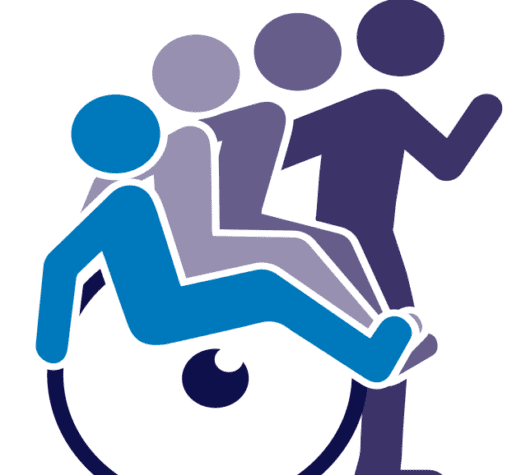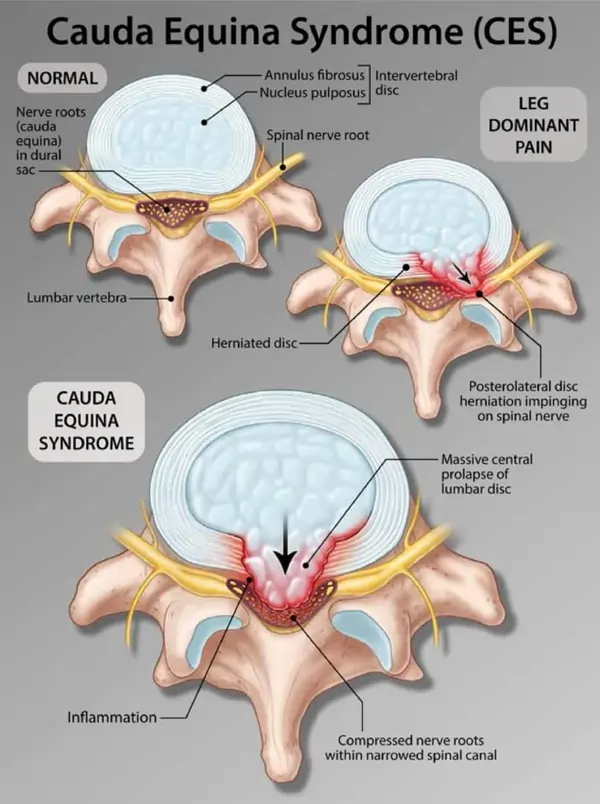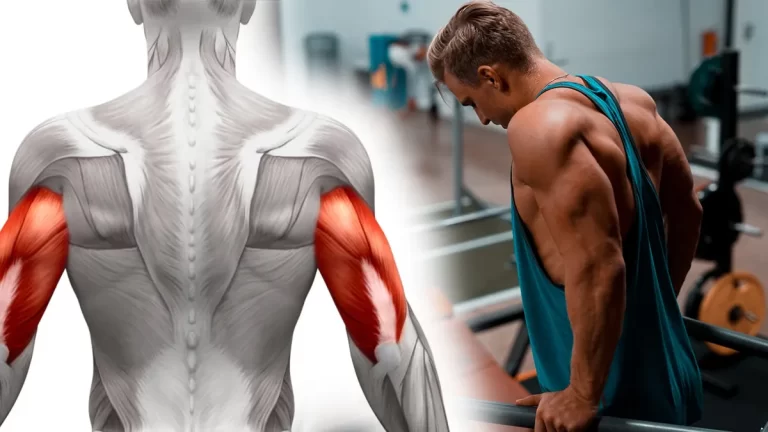Top 5 Exercises for Fixing Anterior Pelvic Tilt
Table of Contents
Introduction:
Lower back pain, hip pain, and a protruding belly are classic symptoms of anterior pelvic tilt (APT), a common postural problem in which the front of the pelvis tilts downward and the back tilts upward.
The major causes are tight hip flexors, weak core muscles, poor posture, and extended sitting. The good news is that by stretching tight muscles and strengthening weak ones, certain workouts can help address this imbalance. The top 5 exercises created especially to correct anterior pelvic tilt and enhance posture are listed below.
Benefits of the Top 5 Exercises to Correct Anterior Pelvic Tilt:
The top 5 anterior pelvic tilt exercises have several advantages that enhance posture and general bodily function:
- Improves Core Muscles: By strengthening the weak gluteal and abdominal muscles, these workouts help stabilize the pelvis and stop excessive forward tilting.
- Stretches for Tight Hip Flexors: By relieving tension in the quadriceps and hip flexors, several exercises lessen pain and pressure on the lower back.
- Improves Posture: These exercises assist in balancing the hips and spine by harmonizing the muscles surrounding the pelvis, which leads to a more confident and erect posture.
- Reduces Lower Back Pain: By releasing pressure on the lower back and strengthening weak muscles, pelvic misalignment-related chronic pain is lessened.
- Improving Functional Movement: Improving overall movement efficiency with the correction of anterior pelvic tilt makes everyday tasks like lifting, jogging, and walking safer and simpler.
Top 5 Exercises for Fixing Anterior Pelvic Tilt Video:
Top 5 Exercises for Fixing Anterior Pelvic Tilt:
Hip Flexor Stretch:
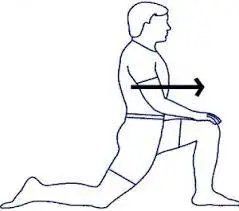
Anterior pelvic tilt is frequently caused by tension in the front of the hips, which may be released with the help of the Hip Flexor Stretch. This stretch relieves lower back strain and improves posture by gradually stretching the hip flexor muscles, which lessens the forward pressure on the pelvis. Frequent use of this stretch facilitates improved movement patterns throughout everyday activities and exercise, enhances hip mobility, and encourages a more neutral pelvic posture.
Glute Bridge:

An effective exercise for stabilizing the pelvis and developing the glute muscles—which are frequently weak in people with anterior pelvic tilt—is the glute bridge. This exercise helps counterbalance the forward tilt of the pelvis, minimizes lower back tension, and improves appropriate spinal alignment by using the glutes and hamstrings while raising the hips. Frequent glute bridge exercises provide more efficient movement throughout everyday tasks and exercise, strengthen the core, and improve posture.
Child’s Pose:

A soft yet powerful stretch, Child’s Pose helps release tension in the spine, hips, and lower back—areas frequently impacted by anterior pelvic tilt. This posture promotes a more neutral pelvic alignment and lessens lumbar stiffness by lengthening the spine and releasing the muscles surrounding the pelvis. Regularly performing Child’s Pose enhances flexibility, encourages calmness, and supports improved posture in day-to-day activities.
Plank:

An excellent exercise for strengthening the core muscles—the lower back, obliques, and abdominals—is the plank. These muscles are essential for reversing anterior pelvic tilt. The plank helps maintain a neutral pelvic posture, lessens excessive forward tilt, and eases lower back pain by activating and stabilizing these muscles. Frequent plank exercise promotes efficient movement in daily tasks and workouts, improves posture, and strengthens the core generally.
Hamstring Stretch:
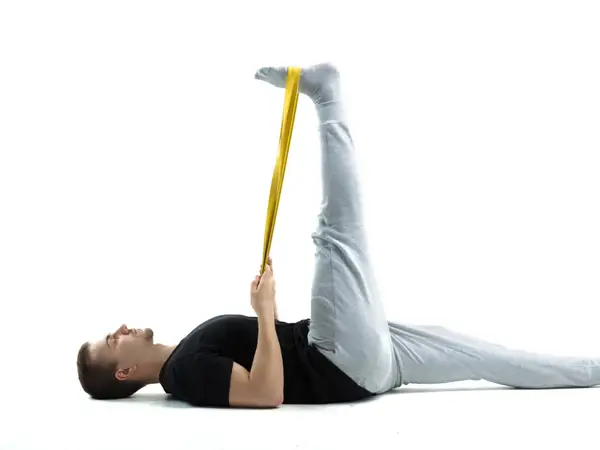
The back of the thigh muscles, which frequently develop stiffness in people with anterior pelvic tilt, are the focus of the hamstring stretch. Lower back strain can be relieved, and the pelvis can return to a more neutral posture by stretching the hamstrings. Doing this stretch regularly promotes balanced movement patterns throughout everyday activities and exercise, increases flexibility, and improves posture overall.
Cat-Cow Pose:
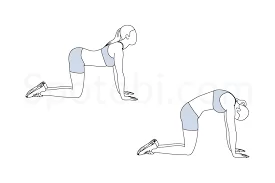
The Cat-Cow Pose is a dynamic stretch that works wonders for correcting anterior pelvic tilt because it engages the back and core muscles while gently mobilizing the spine. By alternating between spinal flexion and extension, this exercise develops a more neutral pelvic alignment, reduces tension in the lower back, and increases general spinal flexibility. Regular Cat-Cow practice improves posture, eases pain from tense or weak muscles, and promotes pain-free, fluid movement all day long.
Bicycle Crunches:
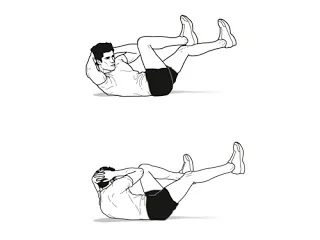
Bicycle crunches are a great way to build your abdominal muscles, especially your obliques, which are crucial for pelvic stability. Bicycle crunches decrease lower back tension, lessen excessive forward pelvic tilt, and correct anterior pelvic tilt by using the core during a controlled twisting action. Frequent practice strengthens the core, corrects posture, and promotes more balanced and effective movement in daily tasks and exercise.
Conclusion:
To reestablish good pelvic alignment and correct anterior pelvic tilt, it is necessary to strengthen weak muscles and stretch tight ones. Exercises that target muscle imbalances, lessen lower back pain, and enhance posture include Hip Flexor Stretch, Glute Bridges, Child’s Pose, Planks, Hamstring Stretch, Cat-Cow Pose, and Bicycle Crunches. When performed regularly, these workouts improve flexibility, core stability, and pain relief.
FAQs
Stretching often and doing core-focused strengthening activities like yoga or Pilates might help treat APT. Consult a physical therapist for help correcting your posture if you don’t think you have the skills or expertise to accomplish it on your own.
Conventional memory foam mattresses frequently permit excessive hip sinkage, which can make the forward tilt of the pelvis worse. On the other hand, mattresses that are too firm may induce pressure spots that lead to compensatory posture.
Sit-ups cause pain by activating the hip flexors, which pull from the front of the lumbar spine and compress sensitive vertebral discs. Anterior tilting of the pelvis is the term used to describe this forward pull from the hip flexors.
An anterior pelvic tilt may worsen if you sit for extended periods of time. That’s because it tilts the pelvis forward due to this. Never sit for more than thirty minutes at a time. If you have to sit for long amounts of time, take a 30-minute break to stretch and move about.
Depending on how severe the tilt is and how long it has been, the length of therapy may change. Not only may regular chiropractic adjustments assist in correcting anterior pelvic tilt, but they can also stop it from happening again.
You may produce a lot of power overall if you have an anterior pelvic tilt. Your weight will be supported by the balls of your feet instead of your heels when your pelvis is moved forward.
Since the hip flexors are not intended to be actively engaged, these planks are more advantageous than other ab workouts. They are a great option for learning how to correct anterior pelvic tilt because they mainly work your glutes and abdominal muscles.
If performed correctly and with alignment, squats can assist in correcting anterior pelvic tilt. They bolster the core, hamstrings, and glutes—muscles that are often weak in people with APT. They might, however, worsen the tilt if done improperly, particularly with an arched back or disengaged core.
The majority of women have a tilted uterus at birth. Actually, a tilted uterus affects one out of every five women. Despite being widespread, the illness usually won’t cause irregular menstruation or make getting pregnant or giving birth difficult.
Anatomy of Anterior Pelvic Tilt:
Long durations of sitting can cause the rectus femoris and iliopsoas, two hip flexors, to tighten. On the other hand, inactivity may cause the gluteal muscles, especially the gluteus maximus, to weaken, making the tilt worse.
By allowing your hips to sink too far, an excessively soft or poorly supported mattress will undoubtedly worsen your anterior pelvic tilt. Your lower back becomes too arched as a result, which forces your pelvis to lean forward further as you sleep.
The good news is that anterior pelvic tilt can usually be addressed with workouts that strengthen weak muscles and stretch tight ones. Your pelvis returns to its normal position as you get better at these activities.
Anatomy of Anterior Pelvic Tilt (APT)
The person develops weak core muscles as a result of this posture over time. More precisely, it affects the obliques and transverse abdominals. Furthermore, the same issue will affect other muscles, including the hamstrings and glutes.
According to some studies, hip stretches can assist in correcting anterior pelvic tilt nearly instantly, but according to other studies, it can take eight weeks. Your degree of physical activity, as well as the strength and flexibility of your muscles, may affect how long it takes.
One basic lower-body exercise that can help with anterior pelvic tilt correction is the squat. Place your feet hip-width apart as you stand.
Anterior pelvic tilt is most often caused by prolonged sitting, which will only make the condition worse. In addition to continuously shortening your hip flexors, the L-shaped position we adopt for extended periods of time at work or home also causes your hip extensors to lengthen and become inactive.
Putting your pelvis in a more neutral posture is the key to improving your anterior tilt as you sleep. The easiest method for those who sleep on their backs is to place a blanket or pillow beneath their knees.
Stretching often and doing core-focused strengthening activities like yoga or Pilates might help treat APT. Consult a physical therapist for help correcting your posture if you don’t think you have the skills or expertise to accomplish it on your own.
To correct pelvic alignment, they stretch tight muscles like the hamstrings and hip flexors and strengthen weak muscles like the glutes and core.
A postural imbalance known as anterior pelvic tilt occurs when the front of the pelvis tilts forward and the lower back arches excessively. This condition frequently results in pain and bad posture.
References:
- Ginta, D. (2024, December 20). 5 exercises for anterior pelvic tilt. Healthline. https://www.healthline.com/health/fitness-exercise/anterior-pelvic-tilt-exercises
- Crichton-Stuart, C. (2023, July 24). Exercises to fix anterior pelvic tilt. https://www.medicalnewstoday.com/articles/322684
- Pattnaik, S. (2024, June 27). 8 Effective exercises for anterior pelvic tilt. Healthy Foods for Weight Loss to Add in Your Diet | ToneOpFit. https://toneopfit.com/blogs/exercise-for-anterior-pelvic-tilt
- McQuilkie, S., DC. (2023b, July 3). How to fix anterior pelvic tilt posture – 10 exercises | Back Intelligence. PostureFlow (Formerly Back Intelligence). https://backintelligence.com/anterior-pelvic-tilt-fix/
- Anterior pelvic tilt. (n.d.). Baptist Health. https://www.baptisthealth.com/blog/sports-medicine/anterior-pelvic-tilt
- 5 exercises for anterior pelvic tilt | Proremedy Physio. (2024, September 25). Proremedy Physio. https://proremedyphysio.com/5-exercises-for-anterior-pelvic-tilt/
- Ken. (2025, January 22). Exercises for anterior pelvic tilt | Christopher Boone, MD. Chris Boone, MD. https://christopherboonemd.com/blog/exercises-for-anterior-pelvic-tilt/
